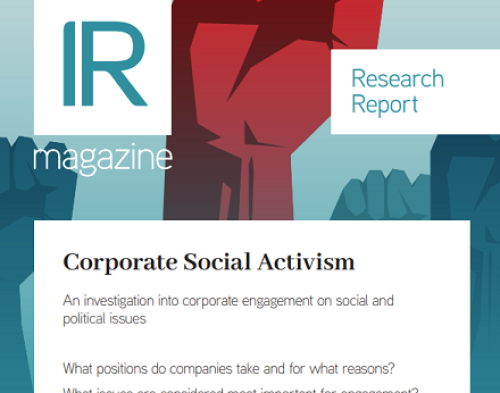Simple steps to help get your story across to increasingly active index funds
A very large money management firm bought a family of index funds a while back. ‘I used to own nothing but good stocks,’ said the CEO. ‘Now I also own a bunch of crappy stocks – and I cannot sell them, not ever. What I’ve learned is that the only tool I have to make them less crappy is my vote.’
A lot of index funds have come to similar conclusions. That matters a lot – to boards of directors, C-suites, activist investors and proxy advisers, among others. For the investor relations professionals who must navigate between them, it means a new and somewhat different communications mission. The good news is that the mission is entirely possible.
Once upon a time, index fund votes were cast annually for unopposed slates of directors and reappointed auditors. It was a quiet business, only occasionally enlivened by a transaction or anything else that might actually affect the value of the shares.
Not any longer. The last decade’s quiet revolution in corporate governance now means proxy votes are often cast for potentially value-creating (or value-destroying) proposals. Even the fairly straightforward premise of say-on-pay has become a de facto plebiscite on management performance: beating the peer group or the benchmark can mean approval for a fat pay packet (just as failure to meet the benchmark can mean rejection of that pay proposal).
Index funds are central to this transition. They now own 18 percent of the total market capitalization of the NYSE and the Nasdaq National Market. They own enough to swing many contested votes – and their percentage ownership is growing.
When a matter is contested, index funds don’t automatically vote with management, nor do they automatically follow the guidance of an outside proxy adviser. They are open to persuasion, but it’s a different kind of persuasion from the type IR applies to the active investment community. Here are the two big differences:
The ability to cash out: Index funds are the ultimate long-term investors. They never sell (unless a company leaves their index). Active managers, considering a transaction or an activist proposal, take into account their ability to sell (or buy) at any time. ‘Take the cash and then cash out’ is a valid active-management strategy that’s unavailable to the index fund.
Index fund voters typically give more weight to whether a near-term action will leave the company better or worse off in the long term. Will the company still be able to execute its strategy? Will it lose its competitive edge, or its access to capital? These voters also look to precedent: what other companies have done this, and how did it turn out for them? Successes and failures in similar circumstances elsewhere matter a lot to this crowd.
Leaning on the proxy: Index funds don’t know a lot about the companies they own. As they don’t buy or sell, there’s no need – unless an issue arises on which they must vote. But when that issue does arise, it’s going to have competition. The handful of people voting shares at a large institution may vote at thousands of meetings in any given year (up to 15,000 at the mega-institutions).
No matter how urgent a company’s issues, these voters cannot give them much time. A lot of index funds work side-by-side with active management activities – so there might be an analyst or portfolio manager somewhere in the building to talk about what an issue means to the business. But many other index funds don’t have that guidance available. They lean heavily on what companies tell them in the proxy statements.
Yes, the proxy statement – that much-maligned compendium of tiny type and necessary legal language. It’s the most important (and sometimes the only) thing an index fund voter sees. These voters do take meetings when something important is on the table but unless they know what the issues are, and their consequences, those may not be great meetings.
Talking recently with several index fund voters, the top item on their wish list became clear: a new kind of executive summary to begin each proxy statement, written in layman’s language, with no more than eight or nine readable-type pages with relevant charts and tables, to answer the following:
1. What is your take on your industry and its environment? What are the drivers of profit and growth in your industry? What’s your positioning within your industry?
2. What’s your strategic plan? How are you doing on executing it? What should we expect if it’s a success?
3. If there are contested issues in the proxy, what’s your take on them? If they are decided against you, what would be the consequences for your strategic plan, your profitability and your growth?
4. If there are contested board seats to be decided, go easy on your candidate’s resumé. Instead, explain what role the candidate plays (or would play) in the board’s work
5. What issues not on the ballot do we need to know about?
There are other ways to communicate this information, the website being a prime example. There are other audiences, too: the first two points above look a lot like the core investment story most investors are looking for.
When people who don’t know you well have a large voice in outcomes you care about, short, simple and to-the-point most often wins the day. If it works in a proxy statement, it’ll probably work in a lot of other ways as well.
James MacGregor is vice chairman and a co-founder of Abernathy MacGregor










